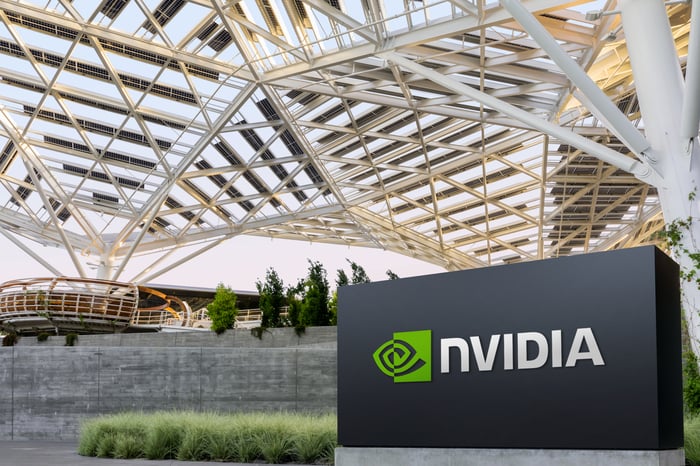Nvidia Sees Market Pullback: What’s Next for Investors?
Nvidia (NASDAQ: NVDA) has established itself as a key player in the artificial intelligence (AI) sector. However, recent months have seen its share value decline significantly, mirroring broader market trends. Currently, Nvidia’s stock is down approximately 25% to 30% from its peak, trading at levels not observed since late summer 2024.
This steep drop offers a rare opportunity to purchase shares in a leading company, but the key question remains: Where will Nvidia be in four years? The answer might be unexpected.
Competitors are Emerging in Nvidia’s Dominated Market
Nvidia’s primary strength lies in its graphics processing units (GPUs), initially designed for gaming but now essential for various high-performance tasks. Their ability to handle multiple calculations simultaneously makes them ideal for applications, especially in AI development.
Despite Nvidia’s dominance—holding more than 90% of the data center GPU market—competition is rising. The significant profits generated by Nvidia have attracted new entrants seeking to claim a share of this lucrative market.
As Nvidia’s profit margins surged, some clients have begun exploring alternatives, frustrated by high GPU prices. This inclination could spark increased competition, particularly as AI hyperscalers look into custom AI accelerators developed by companies like Broadcom (NASDAQ: AVGO). While these accelerators can outperform Nvidia GPUs in niche applications, they are often limited to specific workloads. Many clients already have a clear vision of how they want their AI tasks to function, which may limit the potential impact on Nvidia.

Profit margin data for Nvidia, courtesy of YCharts.
Data Center Revenue Growth Remains Promising
The outlook for Nvidia’s investors hinges on understanding data center capital expenditures. A decline in this spending could significantly impact Nvidia’s revenue. Looking to future trends, Nvidia anticipates that data center capital expenditures will grow from approximately $400 billion in 2024 to around $1 trillion by 2028.
In the past year, Nvidia generated $115 billion from its data center business. If the spending truly reaches $400 billion in 2024, this would equate to nearly 30% of total data center investments. Should expenditures balloon to $1 trillion, Nvidia could see revenues soar to roughly $288 billion, assuming it retains its market share. However, rising competition from custom AI accelerators might hinder Nvidia’s ability to capture this entire market.
Broadcom estimates that its addressable market from three major clients may range between $60 billion and $90 billion by 2027, representing approximately a third of Nvidia’s projected revenue if it maintains its market share. This indicates a direct challenge for Nvidia as Broadcom positions itself strategically.
Is Nvidia likely to face severe challenges in the coming years? The answer appears to be no. The market is expected to evolve into a mix of GPUs and custom AI accelerators, benefiting both Nvidia and Broadcom as strong investment options. While Nvidia may not experience the explosive growth it once did, it should still achieve robust double-digit growth, making it a solid candidate for investors looking to beat the market, particularly with current share prices presenting a discount.
Nevertheless, if the data center market fails to meet projected figures, Nvidia’s stock may struggle to gain traction, risking revenue caps and heightened competitive pressure.
A Revisit to Potential Investment Opportunities
Some investors may feel they missed the chance to buy into high-performing stocks. It’s important to stay informed about current opportunities.
On rare occasions, our analysts highlight specific stocks they believe are poised for significant upward movement. If you’re concerned about missing your ticket to invest in promising companies, taking action now could be wise. Consider the following:
- Nvidia: Investing $1,000 at our last positive recommendation in 2009 would have grown to $296,928.
- Apple: A $1,000 investment from a 2008 recommendation would have risen to $38,933.
- Netflix: A $1,000 investment from 2004 would now be worth $623,685.
Our analysts currently recommend multiple emerging stocks. Joining our advisory service may provide access to information on these opportunities before it’s too late.
Keithen Drury holds positions in Broadcom and Nvidia. The Motley Fool has positions in and recommends both Nvidia and Broadcom. A disclosure policy is in place.
The views expressed herein are those of the author and do not necessarily represent the views of Nasdaq, Inc.
